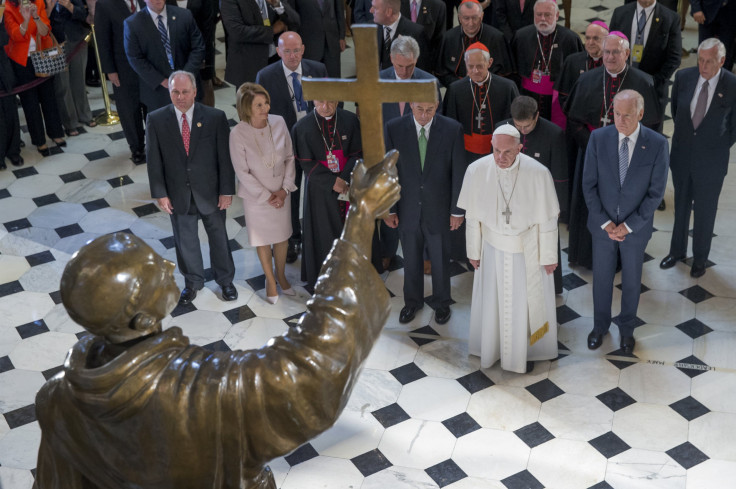
Pope Francis awarded the high honor of sainthood Junípero Serra, a Franciscan friar who was active in California in the 1700s. For the Catholic Church, Serra’s canonization serves as an important vehicle for outreach among America’s large and growing body of Hispanic Catholics. For some, the decision was controversial and endorsement of atrocities committed against indigenous groups during Spanish colonial rule. You can hear more about that debate, including the divided opinions of two of California’s indigenous catholics in a recent report by NPR’s Latino USA (listen to the embedded radio program below).
But there’s another reason why Francis’ choice is controversial. The Catholic Church itself has certified only one of Serra’s reported miracles. Normally, two miracles are required for the attainment of sainthood.
Saint Francis of Assisi, for example, was credited for speaking to animals.
In 1985 Pope John Paul II recognized Serra as “venerable,” putting him on the path to saithood and sparking a push to certify miracles, according to the L.A. Times .
Serra was beatified by the church in 1987 following a report of a nun praying to him and later being cured of Lupis. A second miracle was never certified. Yet Francis allowed his beautification to be fast-tracked , according to the AP.
This apparent bending of the Vatican’s own rules didn’t sit well with some, but others didn't mind.
Juniper Serra had 2 miracles: 1. cure of a nun suffering from lupus 2. his life http://t.co/QCoWuBxwP2 https://t.co/MzeoiJuRW2 @CMcCafferty
— Fr Matthew Schneider (@FrMatthewLC) September 24, 2015Serra's 2 required miracles 1) healing a nun of lupus 2) [crickets] @Pontifex
Serra's 2 required miracles 1) healing a nun of lupus 2) [crickets] @Pontifex #infallibility
— 4d2 (@4d2tweets) September 24, 2015You need 2 miracles to become a Saint, Junipero Serra the newest U.S. Saint only had 1 miracle, so Pope Francis threw in a card trick ... ;)
— Börger ☮ (@Borger_911) September 23, 2015© 2025 Latin Times. All rights reserved. Do not reproduce without permission.




